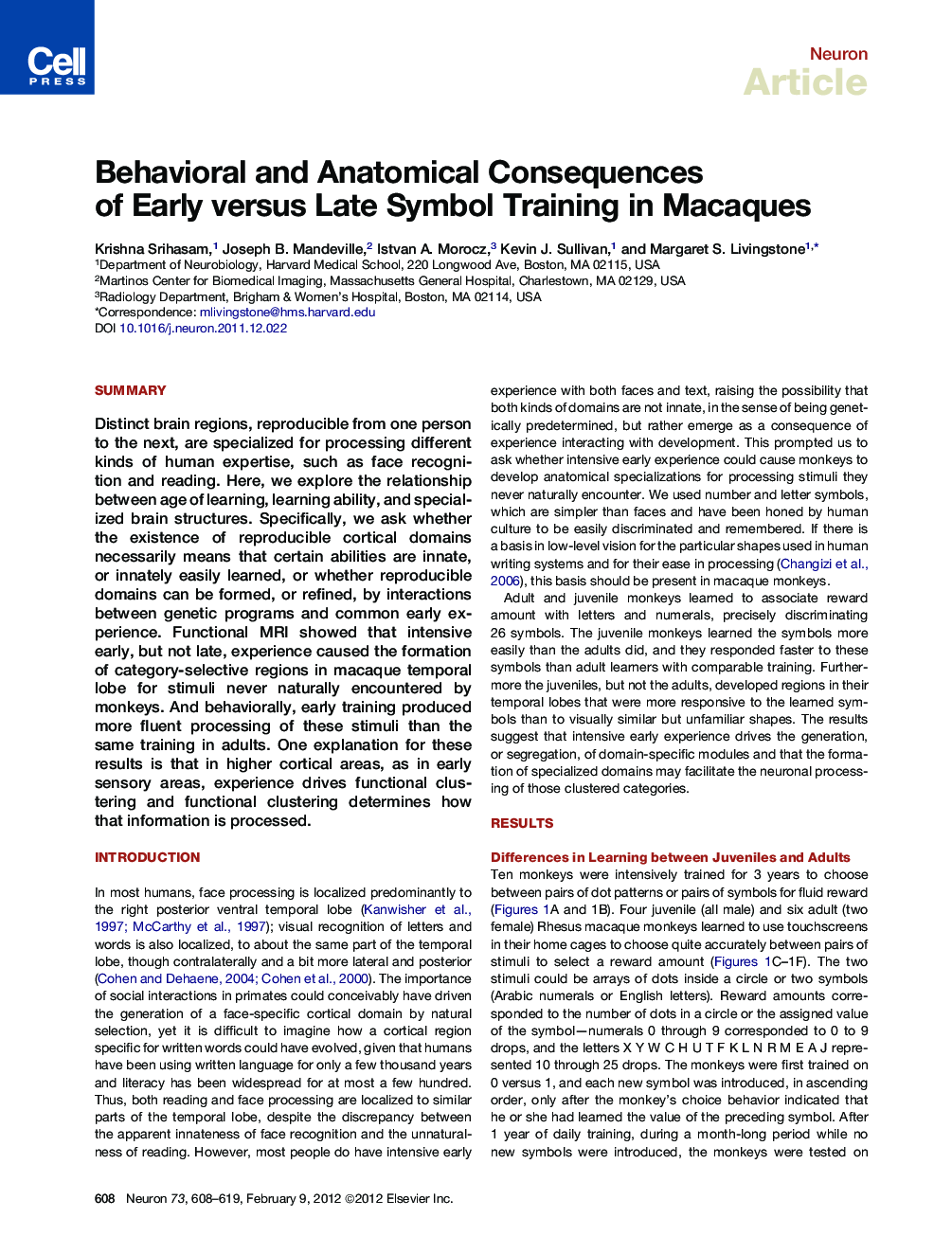| Article ID | Journal | Published Year | Pages | File Type |
|---|---|---|---|---|
| 4321500 | Neuron | 2012 | 12 Pages |
SummaryDistinct brain regions, reproducible from one person to the next, are specialized for processing different kinds of human expertise, such as face recognition and reading. Here, we explore the relationship between age of learning, learning ability, and specialized brain structures. Specifically, we ask whether the existence of reproducible cortical domains necessarily means that certain abilities are innate, or innately easily learned, or whether reproducible domains can be formed, or refined, by interactions between genetic programs and common early experience. Functional MRI showed that intensive early, but not late, experience caused the formation of category-selective regions in macaque temporal lobe for stimuli never naturally encountered by monkeys. And behaviorally, early training produced more fluent processing of these stimuli than the same training in adults. One explanation for these results is that in higher cortical areas, as in early sensory areas, experience drives functional clustering and functional clustering determines how that information is processed.
► Juvenile monkeys learned symbols faster and more fluently than adults did ► Juvenile learners developed symbol-selective regions in their temporal lobe ► There is a regular organization of category-selective modules along IT ► This study links intensive early experience, expertise, and modular organization
